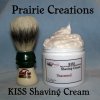People are always buying soaps because they contain tallow and perform better or are creamier, but I have never heard of a cream that contains Tallow or why they don't need it. People buy creams that contain Shea Butter or other oils and ingredients, but Tallow never comes up.
I've always wondered but a recent Scuttle question about soaps breaking down brought it back up for me. Soaps seem to break down more in scuttles and creams not so much.
I'm hoping one of the resident Soap Making experts can chime in and tell me why that is.
Just wondering.
I've always wondered but a recent Scuttle question about soaps breaking down brought it back up for me. Soaps seem to break down more in scuttles and creams not so much.
I'm hoping one of the resident Soap Making experts can chime in and tell me why that is.
Just wondering.


